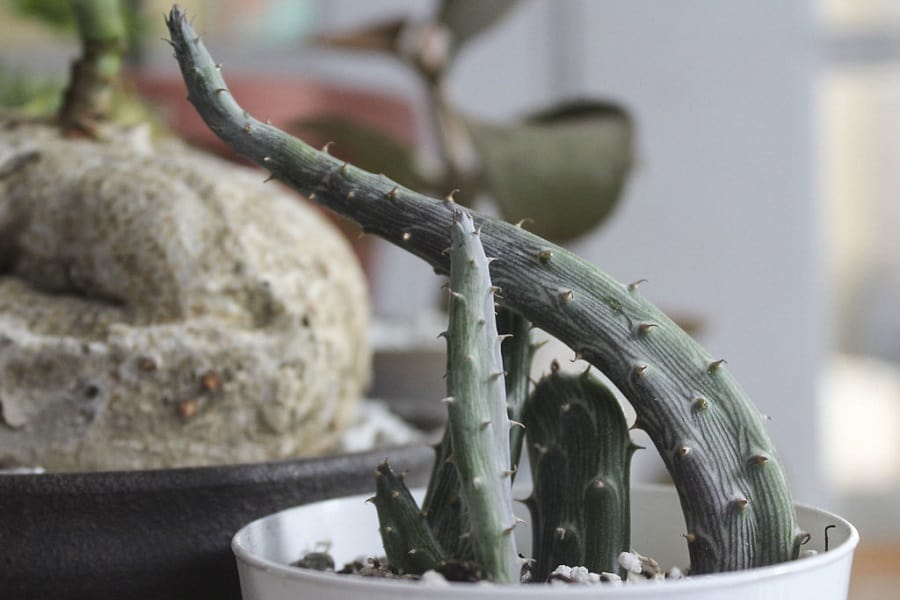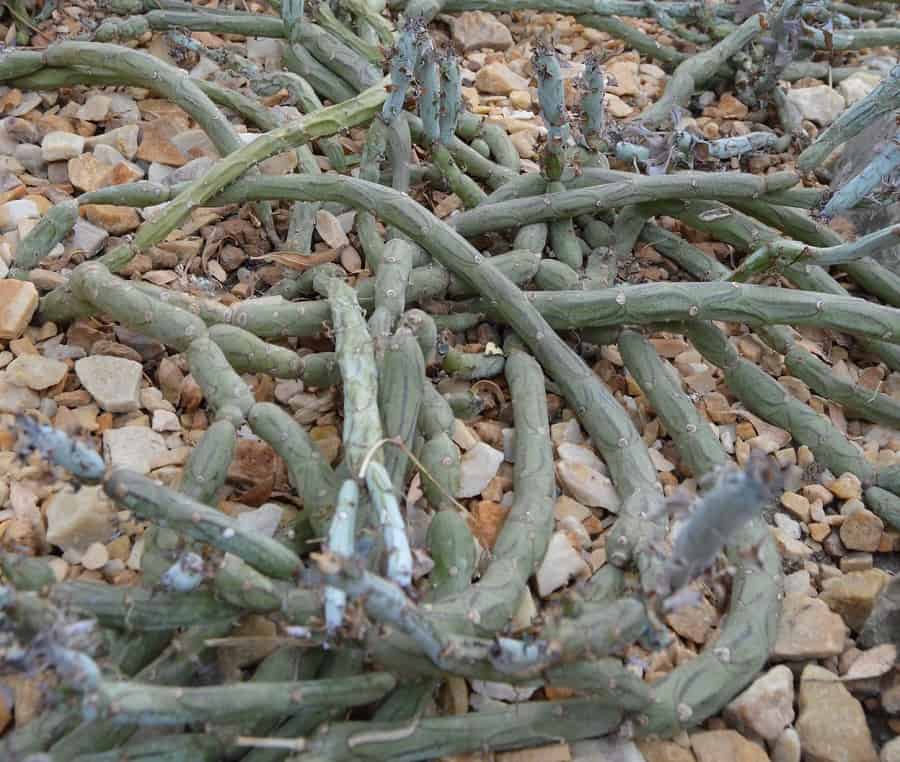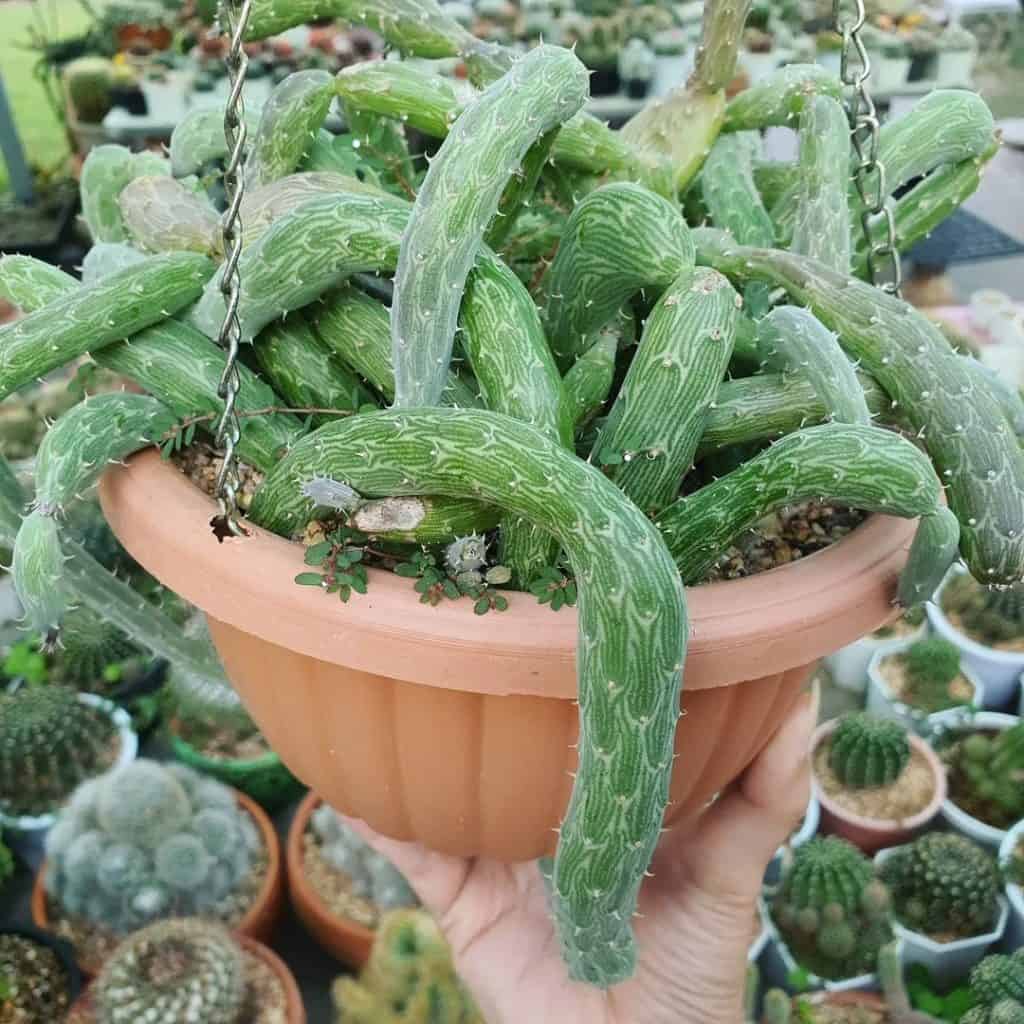Senecio pendulus: Characteristics and Care
Are you ready to embark on a botanical adventure like no other? Introducing Senecio pendulus, the captivating succulent that will quite literally crawl its way into your heart! This quirky plant, often referred to as the “inchworm succulent,” boasts an irresistible charm that will have you head over heels in no time.

Contents
About Senecio Pendulus
Native to the arid regions of Yemen, Kenya, Ethiopia, and Somalia, Senecio pendulus is a true desert dweller with a unique growth habit. Imagine cylindrical green stems that creep along the ground, branching and overlapping like an inchworm on a mission. As if that’s not impressive enough, these stems are adorned with tiny spines, giving the plant a whimsical and slightly mischievous appearance.
But the real showstopper? The vibrant blooms that burst forth in shades of green, orange, and red, adding a vibrant pop of color to your indoor oasis. It’s like having a miniature fireworks display right in your living room!
Related Post:
24 Senecio Lower Classifications [With Pictures]
How to Care For Senecio pendulus
Light Matters
One of the best things about Senecio pendulus is its adaptability to different lighting conditions. While it thrives in bright, indirect sunlight, you can also provide it with some direct sun exposure, especially if you live in a cooler climate. If you’re an indoor gardener, fear not! A grow light can work wonders in mimicking the plant’s natural habitat. Just be sure to adjust the intensity and duration based on your little inchworm’s needs.
Watering Wisdom
As a succulent, Senecio pendulus is a true water-saving champion. But don’t let its drought-tolerant nature fool you – proper watering is still essential for its well-being. During the growing season (spring to fall), aim to water your inchworm once every 1-2 weeks, allowing the soil to dry out completely between waterings. In the winter months, you can scale back to once a month or less, depending on your plant’s thirst level.

Soil Secrets
Like any self-respecting succulent, Senecio pendulus thrives in well-draining soil mixes. A simple cactus or succulent potting mix will do the trick, but you can also get creative by adding a little extra grit or sand for improved drainage. Just remember, this plant likes it on the drier side, so choose a soil mix that won’t stay soggy for too long.
Fertilizer Frenzy
While Senecio pendulus isn’t a heavy feeder, a little extra nourishment can go a long way in keeping it happy and healthy. During the growing season, treat your inchworm to a balanced, water-soluble fertilizer every few weeks. Just be careful not to overdo it, or you may end up with a leggy, stretched-out plant.
Temperature and Humidity
As a desert native, Senecio pendulus thrives in warm, dry environments. It’s perfectly content in temperatures ranging from 65°F to 80°F (18°C to 27°C) and doesn’t mind a little humidity, as long as it’s not excessive. If you’re in a cooler climate, consider bringing your inchworm indoors during the winter months to prevent any chilly surprises.
Pests and Problems
While generally resilient, Senecio pendulus can sometimes fall prey to pesky mealybugs or scale insects. Keep a close eye on your plant and be prepared to treat any infestations with a gentle insecticidal soap or neem oil solution.

Pruning Pointers
Since Senecio pendulus has a naturally trailing and creeping growth habit, pruning for shaping isn’t really necessary. However, you’ll want to occasionally prune off any dead, damaged, or discolored stems to keep your inchworm looking its best. Use clean, sharp scissors or pruners to snip off the affected areas, making sure to cut just above a healthy leaf node. This will encourage new growth and prevent any further issues from spreading. Aside from this light maintenance pruning, simply let your Senecio pendulus grow freely and enjoy its whimsical, worm-like tendrils!
Potting and Repotting
When it comes to containers, Senecio pendulus is a low-maintenance dream. Terra cotta or unglazed ceramic pots with ample drainage holes are perfect for these inchworms. As for repotting, you’ll only need to do this every 12 to 18 months or when you notice roots peeking out of the drainage holes. It’s the perfect opportunity to refresh your plant’s soil and give it a little extra room to stretch out.

Senecio pendulus Propagation Methods
Senecio pendulus can be easily propagated from seeds or cuttings, allowing you to multiply your inchworm collection with ease.
For seed propagation:
- Sow seeds in the spring
- Use a well-draining seed-starting mix
- Keep the soil lightly moist and at around 70°F (21°C)
- Seeds should germinate within 14-21 days
For propagating from cuttings:
- Take 2-4 inch stem cuttings from a healthy plant
- Allow cuttings to callous over for several days
- Plant the calloused cuttings in a well-draining succulent/cactus soil mix
- Water sparingly until roots are established
While seeds tend to be the easier propagation method for this species, cuttings can still root successfully with a bit of patience. Just be sure to let them properly callous before planting to increase their chances of taking root.
